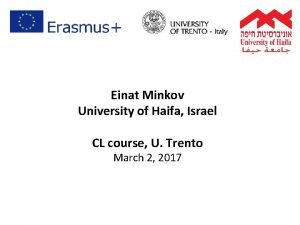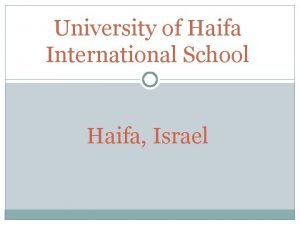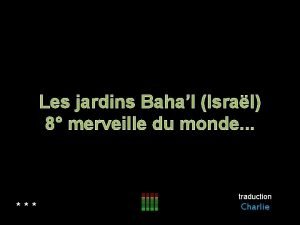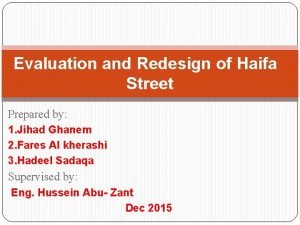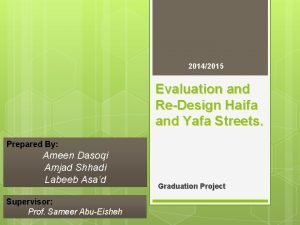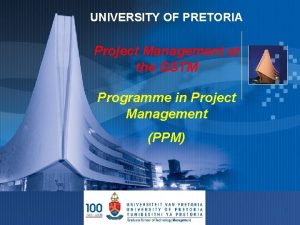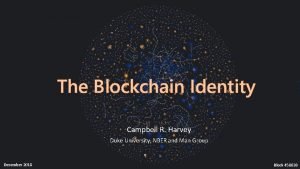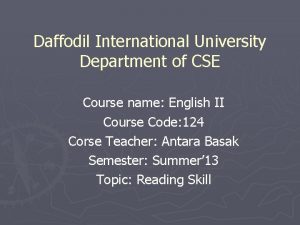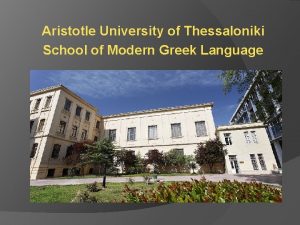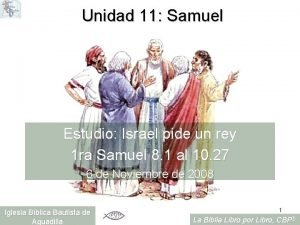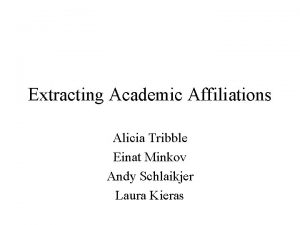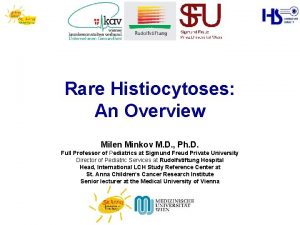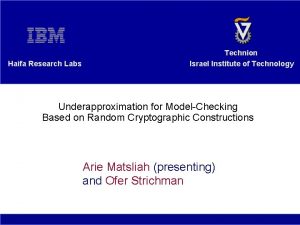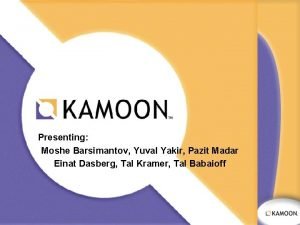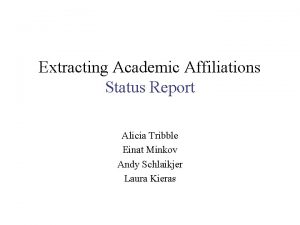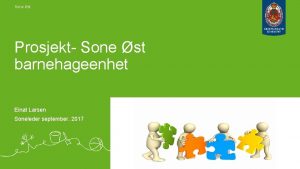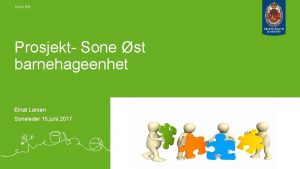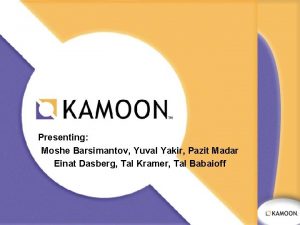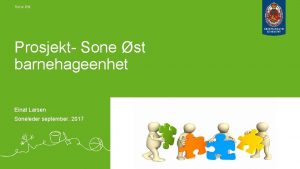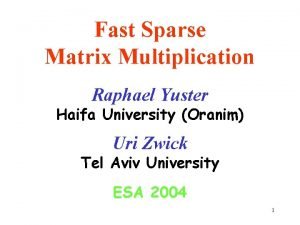Einat Minkov University of Haifa Israel CL course















![Lexical knowledge for parsing • Structural ambiguities: He broke [the window] [with a hammer] Lexical knowledge for parsing • Structural ambiguities: He broke [the window] [with a hammer]](https://slidetodoc.com/presentation_image_h/12d4f78784ddf55a44aa3a857fa708ca/image-16.jpg)








- Slides: 24

Einat Minkov University of Haifa, Israel CL course, U. Trento March 2, 2017


About myself • 2008, Ph. D from the Language Technologies Institute at Carnegie Mellon University, USA • 2008 -10, Nokia Research, Cambridge, USA • 2010 -present, U. Haifa, Israel Teaching: Intro. to AI, text mining, Databases • Main research focus: semantics, graph-based inference, information extraction

Information extraction • Extraction of structured factual information from text • This should be useful for: – Question answering – Information aggregation • Main tasks: – Named entity recognition – Event extraction – Auto. construction of knowledge bases (ontologies)

Information extraction • Extraction of structured factual information from text Event extraction Text (processed) Named entity recognition Ontology construction Question answering Document indexing and search Improved syntactic processing

Named entity recognition • Find and classify names in text.

Named entity recognition • Find and classify names in text.

Named entity recognition • Often addressed as a tagging task, using rulebased or using statistical learning, considering: • the string value formatting (is it capitalized? Does the word end with `ski’? ) • lexicon lookups (does `shen’ appear in a dictionary of first person names? or, `ltd’ in the lexicon of company suffixes? ) • Syntactic and lexical neighborhood (DET on the left? `MR. ’ on the left? )

Named entity recognition • Applications: – Question answering (e. g. , “WHO invented. . ? ” “WHERE is the CL class? ”) – Document indexing and linking – Preliminary step for higher level IE tasks…

Extraction of events Minkov & Zettlemoyer, ACL’ 12

Extraction of events Minkov & Zettlemoyer, ACL’ 12

Extraction of events • Seminar slot population Minkov & Zettlemoyer, ACL’ 12

Extraction of events • Seminar slot population Minkov & Zettlemoyer, ACL’ 12

Extraction of events • The system’s output should `make sense’: – Start time of seminar before the end time. . – The seminar doesn’t take place at night – And its duration is longer than 10 minutes and shorter than 2 hours. . – The location is one of the rooms at CMU • We wish to have relevant world knowledge available Minkov & Zettlemoyer, ACL’ 12

The holy grail: ontology of world knowledge In addition to ‘is-a’ relations: • Synonym / antonym • Holonym / meronym • related / similar-to • …
![Lexical knowledge for parsing Structural ambiguities He broke the window with a hammer Lexical knowledge for parsing • Structural ambiguities: He broke [the window] [with a hammer]](https://slidetodoc.com/presentation_image_h/12d4f78784ddf55a44aa3a857fa708ca/image-16.jpg)
Lexical knowledge for parsing • Structural ambiguities: He broke [the window] [with a hammer] He broke [the window] [with the white curtains] • Good probability estimates of P(hammer | broke, with) and P(curtains| window, with) will help with disambiguation Toutanova, Manning & Ng, ICML’ 04

Lexical knowledge for parsing • Pair-wise statistics involving two words are very sparse, even on topics central to the domain of the corpus. Examples from WSJ (1 million words): – stocks plummeted – stocks stabilized – stocks rose – stocks skyrocketed – stocks laughed 2 occurrences 1 occurrence 50 occurrences Toutanova, Manning & Ng, ICML’ 04

Lexical knowledge for parsing stabilized rise climb stabilizing morphology synonyms “is-a” relationships skyrocket rise Toutanova, Manning & Ng, ICML’ 04

Using multiple similarity measures and chaining inferences stocks rose rise skyrocketed Toutanova, Manning & Ng, ICML’ 04

The holy grail: ontology of world knowledge Why `holy grail’? 1. It is a hard task 2. World knowledge is very dynamic 20 Dalvi, Minkov, Talukdar & Cohen, WSDM’ 04

Relation extraction Entity subclass Organization subclass Person Location subclass Scientist subclass Biologist subclass Politician subclass instance. Of subclass State instance. Of Physicist Country instance. Of City instance. Of Germany instance. Of Oct 23, 1944 instance. Of Max_Planck Society instance. Of Erwin_Planck died. On Nobel Prize located. In Kiel has. Won Father. Of located born. In Schleswig. Holstein citizen. Of Oct 4, 1947 Apr 23, 1858 means(0. 1) died. On born. On Max_Planck means( 0. 9) “Max Planck” means “Max Karl Ernst Ludwig Planck” YAGO: Yet Another Great Ontology [Suchanek et al. : WWW’ 07] Angela Merkel means “Angela Merkel” means “Angela Dorothea Merkel”

Automatic KB population • Gazetteers, tables, and text-based: – General `Hearst patterns’ (92): – Learning type-specific contexts:

Knowledge Bases and NLP • KBs used for text processing tasks: – – Named entity recognition Event extraction Entity linking and disambiguation Question answering • Syntactic structures being increasingly used for KB population and fact extraction – e. g. , “Leveraging Linguistic Structure For Open Domain Information Extraction”, Angeli, Premkumar & Manning, ACL’ 15 • Still an open question how to effectively interface language with world knowledge

Thank you! einatm@is. haifa. ac. il
 Einat minkov
Einat minkov Intel 400m rd haifa 10b israel
Intel 400m rd haifa 10b israel Haifa university summer ulpan
Haifa university summer ulpan 8merveille
8merveille Redesign haifa
Redesign haifa Redesign haifa
Redesign haifa Rcc haifa
Rcc haifa Kaylani model
Kaylani model Ibm haifa
Ibm haifa Ibm research haifa
Ibm research haifa T junction english bond
T junction english bond Course title and course number
Course title and course number Course interne moyenne externe
Course interne moyenne externe Project management university of pretoria
Project management university of pretoria Duke university blockchain course
Duke university blockchain course Yale negotiation
Yale negotiation Daffodil university cse course
Daffodil university cse course Cricos course code deakin university
Cricos course code deakin university Tesol course uq
Tesol course uq School of modern greek language thessaloniki
School of modern greek language thessaloniki 詹景裕
詹景裕 You are good israel
You are good israel Bethabara israel
Bethabara israel El pueblo pide un rey biblia
El pueblo pide un rey biblia Tribus perdidas de israel
Tribus perdidas de israel
